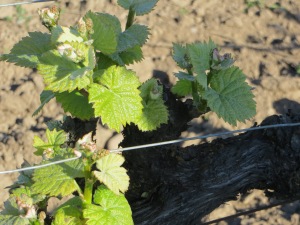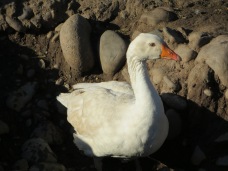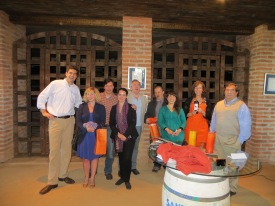Something Old/Something New in Cuba
Time-honoured traditions Our timing was impeccable. Arriving in Remedios to catch the annual celebration of the Virgen de la Caridad del Cobre was a real coo. Each year, a replica of the statue of the Virgen or ‘patroness of Cuba’ is transported to through towns to rest in cherished churches, drawing crowds of local well-wishers and visitors.
Legend has it that around 1611, Rodrigo and Juan Hojos set out to find salt to preserve the meat that fed the families of El Cobre. Halfway across the Bay of Nipe, the men prayed for protection from furious ocean waves. As the waters miraculously calmed, the duo spotted a floating clay figure of the Virgin Mary holding a child in her right arm and a cross in her left. The figure was completely dry.
In the historic center of Remedios, declared a National Monument in 1980, we witnessed a parade of costumed kids performing for an audience of proud parents and visitors, couples salsa dancing in the streets, and a grand procession to bring the Virgen to rest in the Inglesia Mayor, the favourite of the two churches in Remedios. It was almost as though the event was orchestrated just for us.
New and natural In strong contrast to the colonial charm of Remedios, Cayo Santa Maria, Cuba’s newest destination in the Jardines del Rey archipelago, off the northern coast of Cuba offers luxury and quiet seclusion, and the chance to bury your feet in soft virgin sand.
Located in a UNESCO Biosphere Reserve amid floating mangroves and gently sloping sand dunes, Cayo Santa Maria oozes relaxation. This protected paradise thirteen kilometers long and two kilometres wide has no permanent residents to speak of making it easier to maintain that ‘unlived in’ look.
The eight hotels on the island all back on to the powdery white sand beach and offer all-inclusive packages with meals, drinks, activities, entertainment and non-motorized watersports.
Two open-air malls, Puebla La Estrella, between the Barcelo Cayo Santa Maria Beach and Memories Paraiso Beach Resort, and Puebla Las Dunas, between the Melia Cayo Santa Maria and Melia Las Dunas, tempt tourists with fine dining restaurants, a disco, shopping, and bowling. A shuttle is available to take tourists to and from their hotels. Puebla La Estrella also houses a cigar shop, a jazz café and a spa offering couples massage.
On Cayo Santa Maria, outdoor enthusiasts can snorkel or dive to find an amazing variety of fish lurking in the coral formations, or go hiking on the islands of Majá, Fragoso, Cobos, Las Brujas, Ensenachos, Español de Adentro, Francés, and Las Picúas. Other active pursuits are windsurfing, swimming, sailing, deep-sea fishing, speed boat racing and water-skiing. And history buffs will enjoy exploring the ancient caves. A clothing optional beach is located at the west end of the Sol Cayo Santa Maria Hotel.
Just one kilometre from Cayo Ensenachos and 4.5 kilometres from Cayo Santa Maria, a new Dolphinarium has recently opened and kids can swim with the dolphins and see live shows.
In nearby Santa Clara, travelers can visit the memorial museum, built in tribute to Ché Guevara and his comrades killed in combat in Bolivia.
Make your trip to Cuba a multi-destination vacation and see all sides of this beautiful island nation.
More information on Cuba, Remedios and Cayo Santa Maria can be found at www.gocuba.ca and www.cayosantamaria.info




